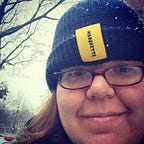The Shanke Collection: A Foreign Correspondent in Nazi Germany
If you haven’t heard of Marquette alum Edwin Shanke (BA ’32, MA ’37) - an AP foreign correspondent working out of Nazi Germany during WWII — then don’t worry, you’re not alone.
The Marquette Special Collections & University Archives is working hard to change that with an exhibit and digital collection of Shanke’s wartime life and work.
Over the past several months, the archivists in the Raynor Memorial Libraries have been working on an exhibit featuring the University’s collection of Shanke’s personal papers, including photographs, wire copy, and correspondence. While the whole collection features material from 1914 through 1993, the display focuses on his work in Berlin during WWII.
In addition to the display located on the third floor of the Raynor Library (open to the public and on display through October 2017), the staff has created a digital portal of Shanke’s war-time experiences, digitizing hundreds of documents and photographs in order to contextualize his personal and professional experiences in Nazi Germany and WWII-era Europe. There, users can read Shanke’s correspondence with his family back in Milwaukee.
The Archives digitized three photo albums for users to flip through, including Shanke’s Personal and AP Photos, as well as two albums featuring pictures from his travels through Southern Europe in 1939 and Switzerland, Iberia, and Alsace-Lorraine from 1940–1941. These albums feature the reporter’s personal photos as he traveled around Europe, on work and on vacation, as well as numerous AP images of Hitler and other Nazi personnel and imagery in Germany in the early years of the war.
They can also explore Shanke’s experiences contextualized by contemporary events in the interactive timeline. This tool, created with Timeline JS, allows visitors to see the reporter’s personal photos and letters home against the backdrop of his AP wire copy, which tracked the development of Hitler’s political power in the early years of the war. It offers insights into Shanke’s personal feelings and experiences about events as they happened.
The coolest of all the digital media tools that the archivists and their staff have created are the two Story Map JS features that map the photographs of Shanke’s travels in Southern Europe and Switzerland along his routes through the countries. Visitors to the digital version of the Shanke Collection can travel along with the reporter, tracing his steps through war-time Europe.
The collection will be on exhibit in the Raynor Memorial Libraries through October of this year and is open to the public for viewing. The digital collection is accessible through the Libraries’ website.
